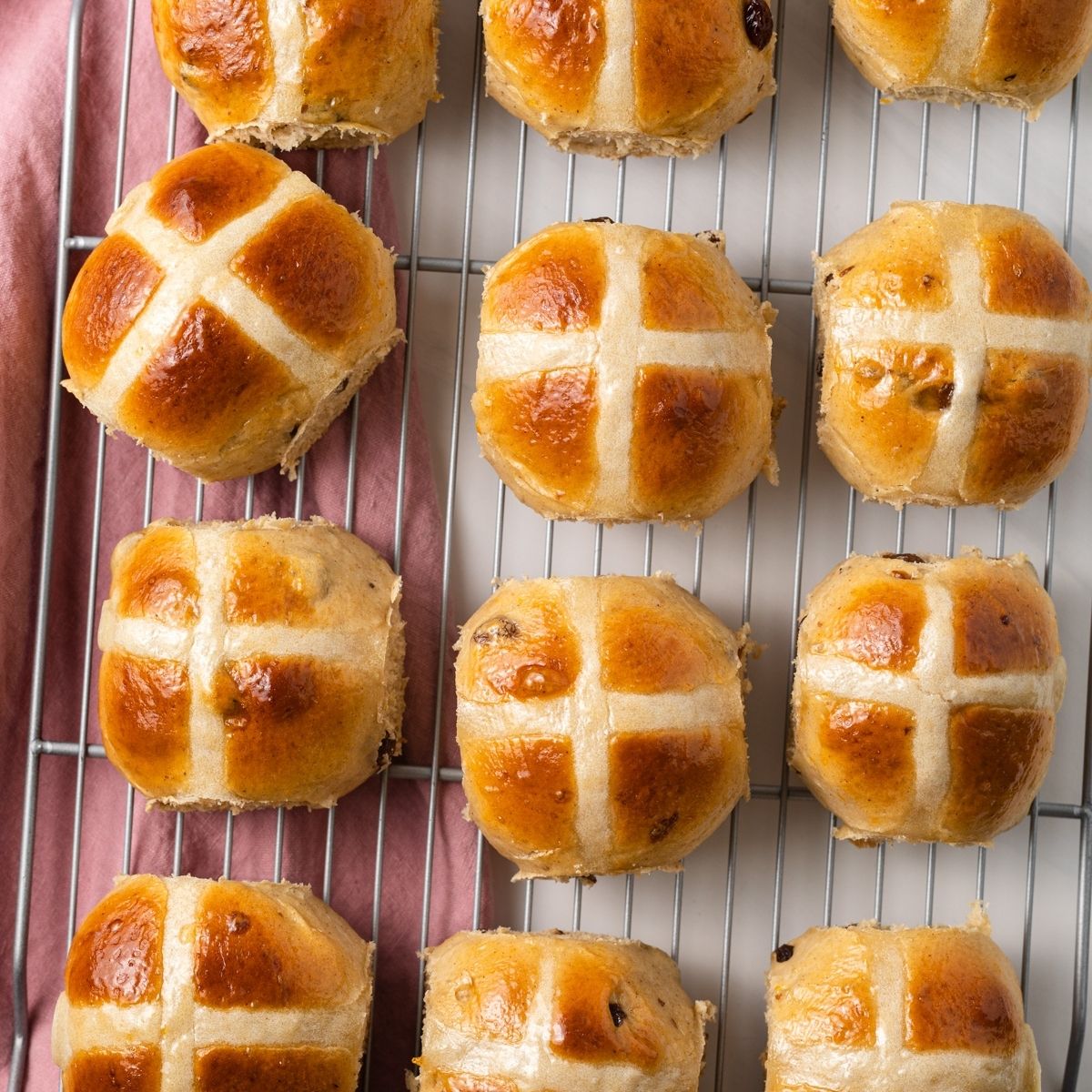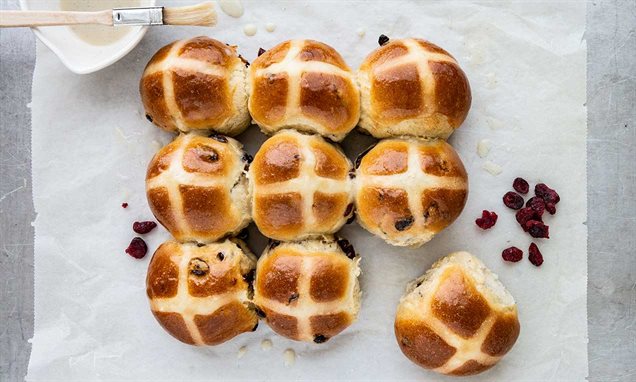Are Hot Cross Buns Becoming Obsolete? A Look At Changing Tastes
Evolving Tastes: A Shift Away from Tradition
Changing Palates and Preferences
Evolving Tastes: A Shift Away from Tradition, Changing Palates and Preferences
In the realm of culinary traditions, a silent revolution is taking place, as long-held palate preferences give way to a altering landscape of gastronomic desires. This transformation is evident within the waning popularity of once-cherished delicacies, like the standard hot cross bun, which now faces an unsure future as a outcome of shifting tastes.
Factors Influencing the Change:
- Changing Demographics: The rise of diverse populations exposes people to a wider array of cuisines, broadening their culinary horizons and altering their taste perceptions.
- Health Consciousness: Heightened awareness of nutrition and dietary restrictions results in the exploration of different meals selections, potentially marginalizing traditional treats perceived as indulgent.
- Culinary Innovation: The emergence of revolutionary culinary techniques and fusion dishes captivates style buds with novel flavor mixtures, difficult conventional notions of food.
- Social Media and Food Trends: The speedy spread of meals trends and the affect of social media platforms expose consumers to a relentless stream of culinary novelties, doubtlessly diminishing the appeal of traditional fare.
The Case of Hot Cross Buns:
- Declining Demand: Sales figures point out a gradual decline in the consumption of hot cross buns, particularly amongst youthful generations.
- Changing Preferences: Consumers increasingly hunt down extra flavorful and indulgent Easter treats, corresponding to chocolate eggs and simnel muffins.
- Loss of Symbolism: The religious significance of hot cross buns has diminished, making them less appealing to a secularized society.
Conclusion:
The altering tastes of customers mirror a dynamic culinary landscape that’s continually evolving. While conventional delicacies like hot cross buns might face challenges, in addition they have the potential to adapt and reinvent themselves to enchantment to new palates. The future of food is a continuous journey of exploration and innovation, the place each the old and the brand new find their place at the table.
Influence of Modern Baking Trends
Modern baking tendencies and changing client preferences have led to a shift away from extra traditional Easter bakes corresponding to hot cross buns.
The reputation of those buns has significantly declined lately, with many shoppers now opting for extra uncommon choices.
Increasing health awareness and gluten-free, vegan, and low-sugar food choices have turn out to be extra widespread, altering people’ tastes and dietary habits.
The rise of artisan bakeries and home baking additionally empowers customers to customize and experiment with their baking, leading to a wider range of accessible choices.
Social media performs an important role, as people share distinctive baking creations, inspiring each other, and culinary tendencies popularized by bakers and influencers.
While conventional bakes proceed to carry a place in some households, the evolving tastes and various bakery choices replicate the altering backdrop of culinary preferences.
These developments suggest a transfer away from custom towards extra fashionable, experimental, and personalized baking experiences.
Ultimately, the decline of hot cross buns reflects the ever-evolving landscape of culinary tendencies, indicating a shift in course of more up to date and various baking preferences.
Health and Dietary Concerns
Shifting Tastes: A Transformation in Food Preferences
As time passes, our culinary preferences endure a gradual transformation. This evolution is pushed by various factors, together with well being issues, dietary restrictions, and cultural influences. In the realm of baked goods, we witness a notable shift away from conventional favorites, such as hot cross buns, in course of alternative choices that align with fashionable tastes and nutritional priorities.
Health-Conscious Consumers
Contemporary customers are more and more health-conscious, looking for foods that promote well-being. Hot cross buns, with their substantial sugar and refined flour content, no longer enchantment to those looking for more healthy options. Instead, they go for buns made with complete grains, low-sugar, and fewer energy.
Changing Dietary Preferences
Dietary restrictions, similar to gluten intolerance and veganism, have reshaped the panorama of meals choices. Hot cross buns, traditionally made with wheat flour, is probably not suitable for those with gluten sensitivities. Vegan consumers, who abstain from animal merchandise, require buns made with out eggs or dairy.
Novelty and Innovation
The rise of social media and food blogs has fueled a want for novelty and innovation in meals. Consumers crave unique flavor combinations and visually interesting treats. Hot cross buns, perceived as traditional and considerably mundane, wrestle to compete with the attract of trendy and Instagram-worthy bakery items.
Future of Hot Cross Buns
While hot cross buns might face declining recognition among sure demographics, their cultural significance endures. They remain a cherished symbol of Easter for lots of. However, it is evident that evolving tastes and dietary concerns are reshaping the baked goods business. To stay related, manufacturers must adapt to altering consumer preferences by providing more healthy, more inclusive, and revolutionary variations of traditional treats.
The Rise of Alternative Delicacies
Easter-Themed Culinary Innovations
Hot cross buns have been a standard part of Easter celebrations for lots of of years, but their popularity may be waning as consumers seek out new and innovative Easter-themed delicacies.
A current survey found that solely 52% of Britons plan to eat hot cross buns this Easter, down from 63% 5 years ago. This decline is most likely going as a outcome of numerous components, together with the growing recognition of alternative Easter treats and the changing tastes of customers.
One of the most well-liked various Easter delicacies is the chocolate egg. Chocolate eggs have been round for hundreds of years, however they’ve become more and more popular in current times, thanks partially to the efforts of main chocolate producers. Chocolate eggs at the second are out there in a broad variety of sizes, shapes, and flavors, making them a well-liked choice for folks of all ages.
Another popular alternative Easter delicacy is the simnel cake. Simnel cake is a fruit cake that is usually lined in marzipan and adorned with eleven marzipan balls. Simnel cake is a traditional Easter cake in the United Kingdom, but it is changing into more and more in style in other nations as properly.
In addition to chocolate eggs and simnel cake, there are a variety of different alternative Easter delicacies which are turning into increasingly popular. These embody carrot cake, cheesecake, and ice cream. These treats are all delicious and festive, they usually provide a pleasant different to traditional hot cross buns.
The altering tastes of customers are also contributing to the decline in recognition of hot cross buns. Consumers are increasingly looking for healthier and more progressive Easter treats. Hot cross buns are excessive in calories and fat, and they don’t offer much nutritional worth. Alternative Easter delicacies, corresponding to fruitcake and carrot cake, are healthier and extra nutritious.
It is evident that the recognition of hot cross buns is declining as shoppers seek out new and innovative Easter-themed delicacies. Chocolate eggs, simnel cake, and other alternative treats have gotten more and more well-liked, and they’re likely to proceed to realize market share in the years to come.
Year-Round Availability and Variety
The Rise of Alternative Delicacies, Year-Round Availability, and Variety
The culinary landscape has undergone a significant transformation in latest times, with the rise of different delicacies, year-round availability, and elevated variety.
Traditional delicacies, as soon as confined to particular seasons or events, at the moment are readily available all 12 months long due to advancements in food preservation and global commerce.
Moreover, the emergence of different delicacies has expanded the gastronomic horizons of shoppers, introducing novel flavors and textures from diverse cultures.
This diversification has fostered a higher sense of culinary exploration and experimentation, as individuals search to fulfill their evolving palates.
Balancing Tradition and Innovation
Preserving the Symbolism and Heritage
The concept of preserving symbolism and heritage whereas embracing innovation encompasses a delicate balancing act. On one hand, traditions serve as threads that connect us to our past, embodying the collective knowledge and values of our ancestors. They provide a sense of continuity and rootedness in an ever-changing world.
However, innovation is equally crucial for progress and adaptation. It allows us to challenge current norms, discover new prospects, and push the boundaries of our knowledge and capabilities. By embracing innovation, we can create solutions that better align with the evolving wants and aspirations of society.
Striking the proper balance between custom and innovation requires cautious consideration. It includes respecting the essence and symbolism of heritage while being receptive to alter that enhances or complements its which means. Innovation shouldn’t be seen as a threat to custom however quite as a chance to revitalize and reinterpret it for contemporary relevance.
One instance of this delicate steadiness can be seen within the evolution of architectural types. Many fashionable buildings incorporate elements of conventional structure, similar to columns, arches, and pediments, whereas introducing progressive materials and designs. This strategy permits for a respectful connection to the past while showcasing the advancements in building techniques and aesthetics.
In conclusion, balancing custom and innovation isn’t a binary selection but quite a steady journey of preserving our heritage while embracing progress. By fastidiously considering the essence of traditions and the potential of innovation, we will create a harmonious blend that enriches our lives and ensures a vibrant and meaningful future.
Adapting to Evolving Consumption Patterns
Changing consumption patterns are influencing traditional products. Hot cross buns, a traditional Easter deal with, are dealing with declining gross sales due to evolving consumer preferences and competitors from different seasonal merchandise.
To stay related, brands must strike a steadiness between custom and innovation. Preserving the core id of the product while introducing fashionable variations can appeal to a broader audience.
Understanding shopper trends is crucial. Market research can uncover emerging preferences, similar to more healthy choices or progressive flavors. By adapting to those trends, manufacturers can create merchandise that meet evolving calls for.
Innovation can lengthen beyond product improvement to packaging, advertising, and distribution channels. For occasion, offering smaller pack sizes or creating online ordering options can cater to altering existence.
Collaboration with other brands or influencers can generate excitement and attain new audiences. Cross-promotions or limited-edition products can create a buzz and drive gross sales.
Balancing custom and innovation requires cautious consideration. Introducing drastic changes could alienate loyal clients, whereas failing to adapt can restrict progress potential. Brands must navigate this delicate line to make sure the longevity of their products.
By understanding client preferences, embracing innovation, and sustaining a connection to custom, manufacturers can successfully adapt to evolving consumption patterns and ensure the continued relevance of their merchandise.
Collaborative Efforts Between Bakers and Consumers
– Preserving Traditional Flavors: Bakers can work with shoppers to determine the basic taste consumers take pleasure in and incorporate it into innovative recipes.
– Open Communication: Fostering ongoing communication channels between bakers and customers allows for real-time feedback and insights.
– Collaborative Innovation: Joint efforts can result in the development of latest flavors and variations that cater to evolving preferences while maintaining the essence of the unique dish.

– Limited-Edition Creations: Bakers could introduce limited-edition variations that push boundaries whereas honoring custom, allowing consumers to expertise new flavors and provide feedback.
– Market Research: Conducting market analysis can present priceless insights into client preferences and guide innovation efforts.
